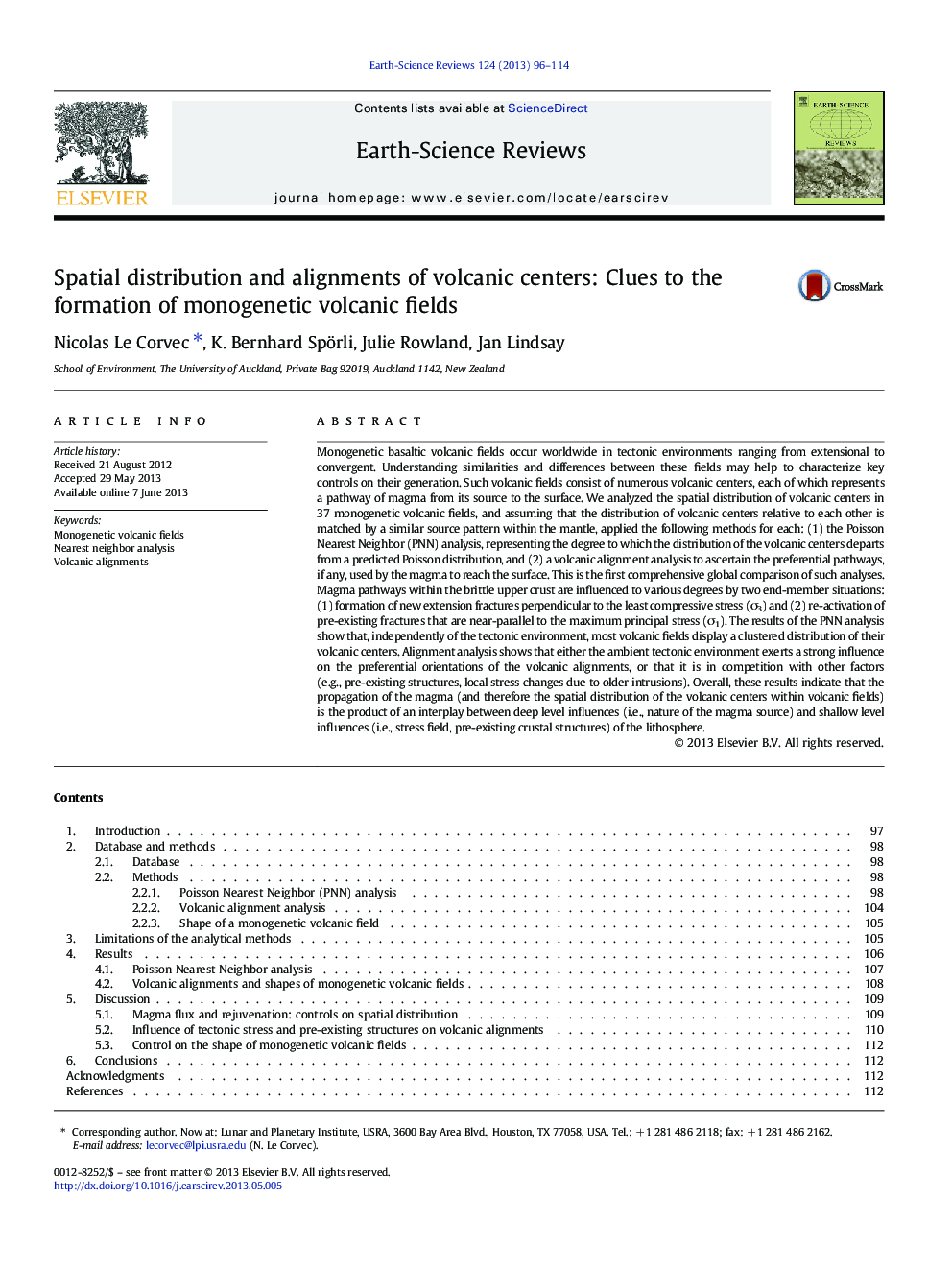| Article ID | Journal | Published Year | Pages | File Type |
|---|---|---|---|---|
| 4725850 | Earth-Science Reviews | 2013 | 19 Pages |
Monogenetic basaltic volcanic fields occur worldwide in tectonic environments ranging from extensional to convergent. Understanding similarities and differences between these fields may help to characterize key controls on their generation. Such volcanic fields consist of numerous volcanic centers, each of which represents a pathway of magma from its source to the surface. We analyzed the spatial distribution of volcanic centers in 37 monogenetic volcanic fields, and assuming that the distribution of volcanic centers relative to each other is matched by a similar source pattern within the mantle, applied the following methods for each: (1) the Poisson Nearest Neighbor (PNN) analysis, representing the degree to which the distribution of the volcanic centers departs from a predicted Poisson distribution, and (2) a volcanic alignment analysis to ascertain the preferential pathways, if any, used by the magma to reach the surface. This is the first comprehensive global comparison of such analyses. Magma pathways within the brittle upper crust are influenced to various degrees by two end-member situations: (1) formation of new extension fractures perpendicular to the least compressive stress (σ3) and (2) re-activation of pre-existing fractures that are near-parallel to the maximum principal stress (σ1). The results of the PNN analysis show that, independently of the tectonic environment, most volcanic fields display a clustered distribution of their volcanic centers. Alignment analysis shows that either the ambient tectonic environment exerts a strong influence on the preferential orientations of the volcanic alignments, or that it is in competition with other factors (e.g., pre-existing structures, local stress changes due to older intrusions). Overall, these results indicate that the propagation of the magma (and therefore the spatial distribution of the volcanic centers within volcanic fields) is the product of an interplay between deep level influences (i.e., nature of the magma source) and shallow level influences (i.e., stress field, pre-existing crustal structures) of the lithosphere.
